3DPrint.com | The Voice of 3D Printing / Additive Manufacturing |
- PrintFoam Launches Large-Format Foam 3D Printer
- Formlabs Releases PU Resins
- AMCM ups the Game in 3D Printed Rockets with World’s Biggest Aerospike Engine
- ToughRubber 3D Printing Resins from Desktop Metal Aim to Break the Acrylate Mold
- 3D Printing Financials: 3D Systems Adjusts 2022 Guidance Range After Mixed Q1 Earnings Results
- 5 Ways Biden’s AM Forward Strategy Will Grow 3D Printing in the US
- 3DPOD Episode 105: Automated Post-Processing with Joseph Crabtree, CEO AM Technologies
- BCN3D & Henkel Developing New Formulations for VLM Resin 3D Printing
- 3D Printing Financials: Xometry’s Revenue Doubled, Losses Deepened
- 3D Printing Webinar and Event Roundup: May 15, 2022
| PrintFoam Launches Large-Format Foam 3D Printer Posted: 17 May 2022 10:30 AM PDT PrintFoam has launched a large-format foam 3D printer, which uses resins to produce foam parts. Rather than use a vat printing process, the startup leverages a novel optical patterning technique. According to PrintFoam founder Matthew Pearlson, the technology makes it “possible to produce plywood sized sheets of 3D printed foam in a matter of minutes." Spun out of MIT in 2016, the company has an interesting new field open to it. The technology works by creating gas bubbles in a liquid photopolymer resin that then lead to closed-cell foam parts. In 2018, we looked at the genesis of the project and the implications.
Light-weighting is something we think for such applications as aerospace, but in our previous articles, we learned that Pearlson’s vision is much broader than this. With the technology currently in beta, PrintFoam is initially targeting wall panels for use in construction and the interiors of homes and offices.
Taken in that context this could be a very interesting development indeed. I’m very bullish on 3D printed foam. I think that, if we can design foams that work well, we could take over a lot of applications from sporting goods to braces and automotive seating. But, I’ve never really thought about it as something that has very large-scale applications. Architectural elements such as room dividers could very well be a niche for this kind of technology. However, if we look at automotive or large vehicle body panels, then the sky is really the limit. It’s traditionally just the kind of thing that would never ever make sense for 3D printing. Then again, maybe with PrintFoam we could be seeing a larger application area in just the kind of large flat panel surfaces that have traditionally been the purview of other technologies. I’m a huge fan of digital foam, and we’ve written about a lot of applications for foam from construction concrete, or its use as an insulator, foam for NASA, foaming lightweight PLA and more. In all of these cases foam is a lightweight solution that provides a durable, strong or tough part that may even be flexible or soft as per your requirements. In our 3DPOD episode with Elissa Ross, we learned that you can design part- or application-specific foams based on specific requirements. Foams are an area with a lot of potential impact from helmets to seats and construction. The post PrintFoam Launches Large-Format Foam 3D Printer appeared first on 3DPrint.com | The Voice of 3D Printing / Additive Manufacturing. |
| Posted: 17 May 2022 07:30 AM PDT Formlabs released two new polyurethane resins, PU Rigid 650 and PU Rigid 1000, for its Form 2, Form 3, Form 3+, Form 3B, and Form 3B+ printers. These materials are meant to be tough and impact-resistant for use in a number of industries, ranging from medical to automotive and consumer goods. The company expects the 650 variant to be used primarily for connector components, like hinges and snap fits, as well as impact-resistant parts, such as wheels, bumpers, and grommets. The 1000 variant is designed for use in jigs and fixtures, castings, enclosures, and sturdy consumer products, including bottle caps, buckles, and bike pedals. 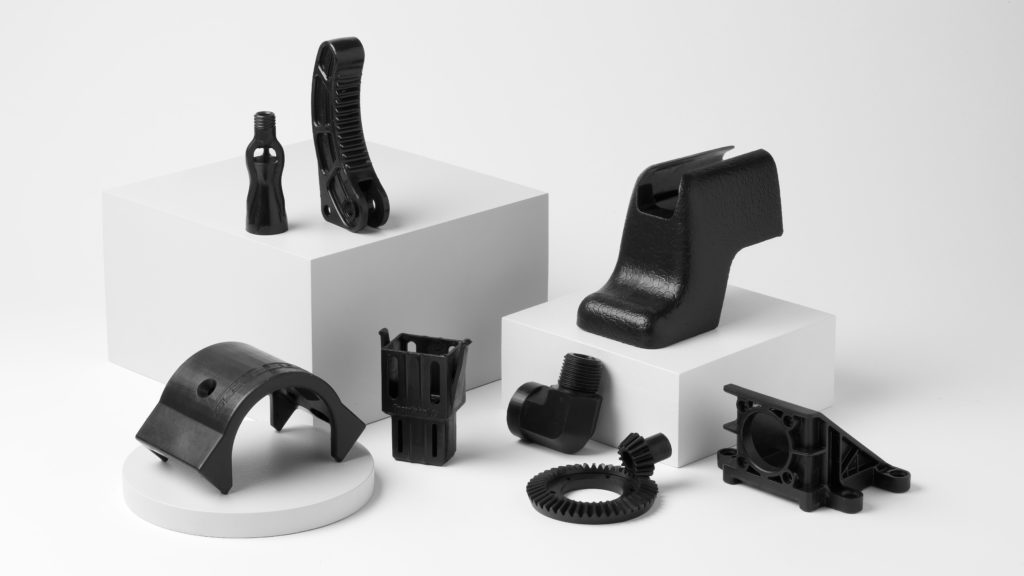 Applications made with Formlabs’ new resins. Image courtesy of Formlabs.
We must point out that you should be careful when breathing in polyurethane fumes as they could have far reaching damaging health effects. In addition, skin contact with uncured polyurethane may also result in adverse health effects, and the material is a probable human carcinogen. So please be careful out there, kids. 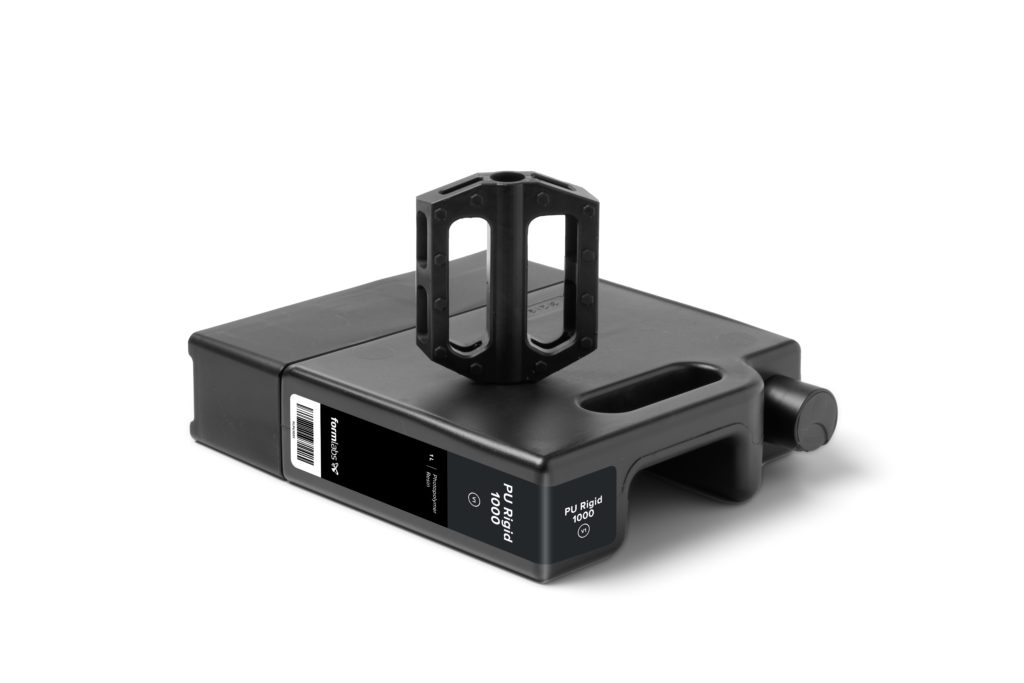 Formlabs PU Rigid 1000. Image courtesy of Formlabs. Semi-rigid materials have generally been a problem for 3D printing, so this is a welcome addition to the 3D printing arsenal. Soft materials and comfortable ones also always have had the issue that they easily wear and break down, so that as an option is also a very welcome development. Think of applications such as braces or immobilisation devices for patients. Also, consider sports equipment that can now be customized. I’m not sure what kind of skin contact approvals they have on the new feedstocks, but PU is very safe once it has been cured. So, with the proper approvals, this opens up a lot of applications and possible uses for 3D printing.
As I’ve stated before, I’m skeptical about thermosets in end-use applications unless they can not be avoided. However, with something like this being made available on quite a sizeable installed base of 3D printers, you do have to think that people will try to do this eventually. Mass customisation in the interior components of assemblies, handles, sports gear, and steering wheel inserts has really been held back because we can’t make long-lasting comfortable components with 3D printing. In these kinds of areas, materials like these could perhaps play a role. If this isn’t the case, then still, it will be an advantage as a prototyping tool. PU is a widely used material, and, in form-and-fit testing prototypes, snap-fit and a little give will contribute a lot of realism. These kinds of parts can really trigger your responses and imaginations in a tactile way, much better if they approximate their end-use materials. If you’d like to see the materials, you can visit Formlabs at the RAPID+TCT event in Detroit, Michigan, at booth #2608. The post Formlabs Releases PU Resins appeared first on 3DPrint.com | The Voice of 3D Printing / Additive Manufacturing. |
| AMCM ups the Game in 3D Printed Rockets with World’s Biggest Aerospike Engine Posted: 17 May 2022 06:30 AM PDT The leader in powder bed fusion printers, EOS and its sister company AMCM are stepping up their efforts to advance 3D printed space propulsion. Just last week, the company announced a partnership with Munich and Singapore-based software startup Hyperganic to accelerate innovation in space propulsion engineering. By integrating Hyperganic's AI-powered algorithmic engineering software platform with EOS' digital, high-end additive manufacturing solutions, the trio plans to revolutionize the field of space propulsion, which still uses very conservative designs. As the first product in this collaboration, AMCM completed printing the world's largest aerospike rocket engine on May 11, 2022, which was engineered using Hyperganic's upcoming algorithmic engineering platform called Core. Set for release to a limited number of applicants on June 15, 2022, Hyperganic Core empowers designers to build 3D printing applications using advanced software algorithms without even a single piece of manual CAD. The result is what Hyperganic CEO and Co-Founder Lin Kayser described as "the most complex AM part ever produced." In fact, according to the long-time entrepreneur, the novel part broke all conventional workflows. The aerospike engine was automatically reengineered for production on an AMCM M 4K large scale, high productivity system for demanding AM applications, using EOS CopperAlloy CuCrZr. Standing at 80 cm tall, the engine demonstrates what's possible when the power of software algorithms is combined with advanced AM systems. 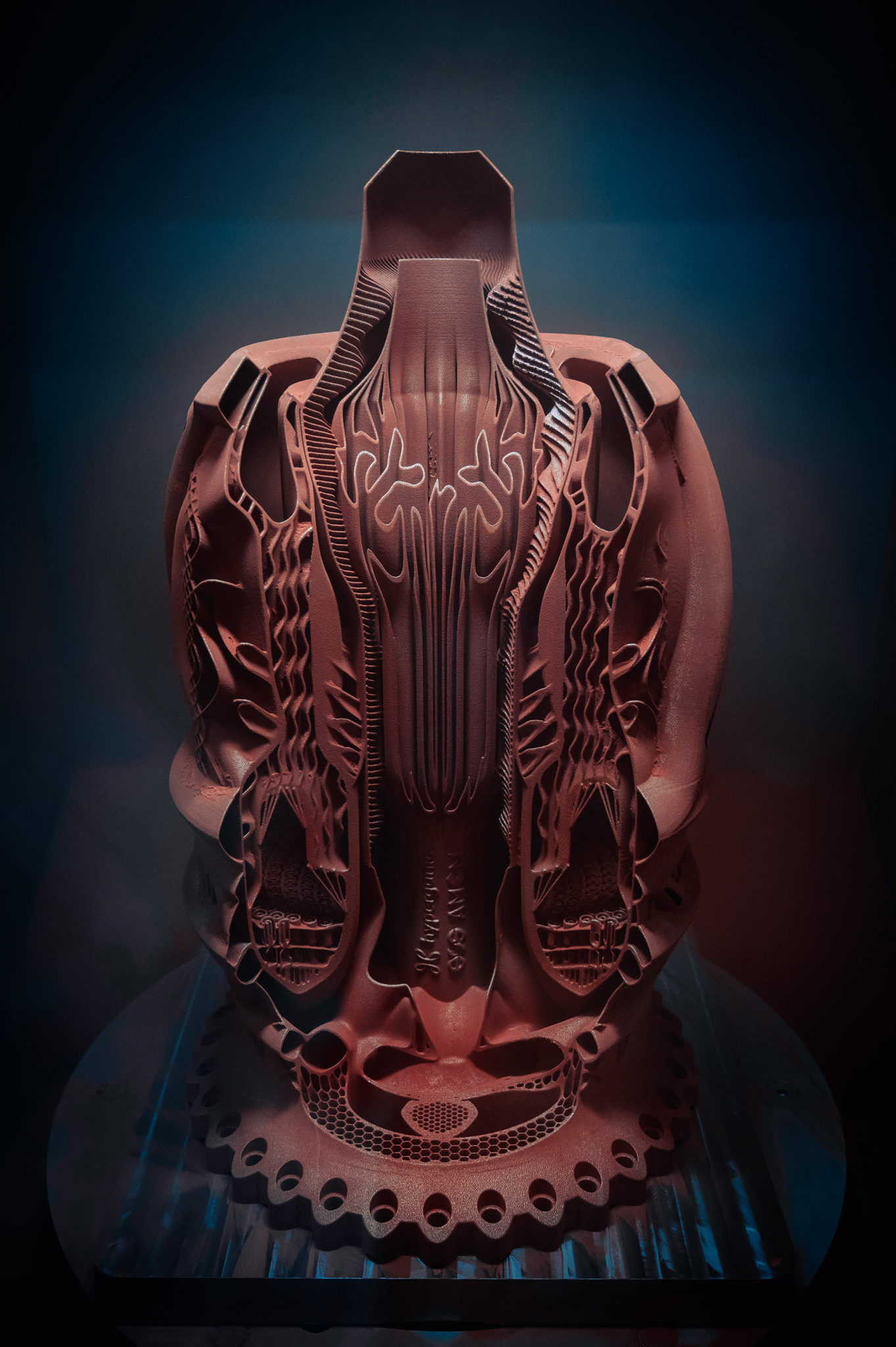 Algorithmically engineered aerospike rocket engine printed in copper at AMCM. Image courtesy of AMCM/EOS/Hyperganic. Algorithmically engineered aerospike rocket engine printed in copper at AMCM. Image courtesy of AMCM/EOS/Hyperganic.Both the private and public space sectors have turned to 3D printing technologies to advance rocket engine manufacturing throughout the last decade. From NASA to industry giants like Aerojet Rocketdyne and new startups like Launcher, many are traveling the AM road to develop and industrialize advanced 3D printed propulsion systems. So, why is this new engine so important to the space industry? This technical innovation is supposed to make rocket engines more efficient than standard propulsion systems. For decades, the aerospike engine has been considered a promising solution. Even NASA tested the concept extensively on the ground and hoped to incorporate it into the Space Shuttle program, but due to budget constraints, the orbiter ended up being equipped with tried-and-tested bell-shaped nozzles instead. However, now that this technology can be built and engineered thanks to new advanced manufacturing techniques and AM's design freedom, we are starting to hear more about aerospike rocket engines. Unlike the standard bell-nozzle rocket engine, the aerospike engine nozzle looks like a spike and has significant advantages over traditional designs. Kayser points out that it is "altitude compensating" and "does away with the heavy nozzle extension, with a spike in the middle instead." Additionally, it is easily up to 20% more efficient than bell nozzle engines, which is a dramatic improvement in the field of rocketry where even fractions of percentage points are worth pursuing, says Kayser.
Kayser refers to initial designs of 3D printed aerospike engines done by Spanish startup Pangea Aerospace, done in collaboration with the German Aerospace Center (DLR) and industrial AM expert firm Aenium. Developed in 2021, Pangea aimed to test several aerospike engine designs that engineers believe can improve rocket engine efficiency by up to 15%. DLR carried out the first hot-run tests of this innovative engine, demonstrating the success of the new technology. Now EOS, AMCM, and Hyperganic hope to take aerospike engines one step forward. 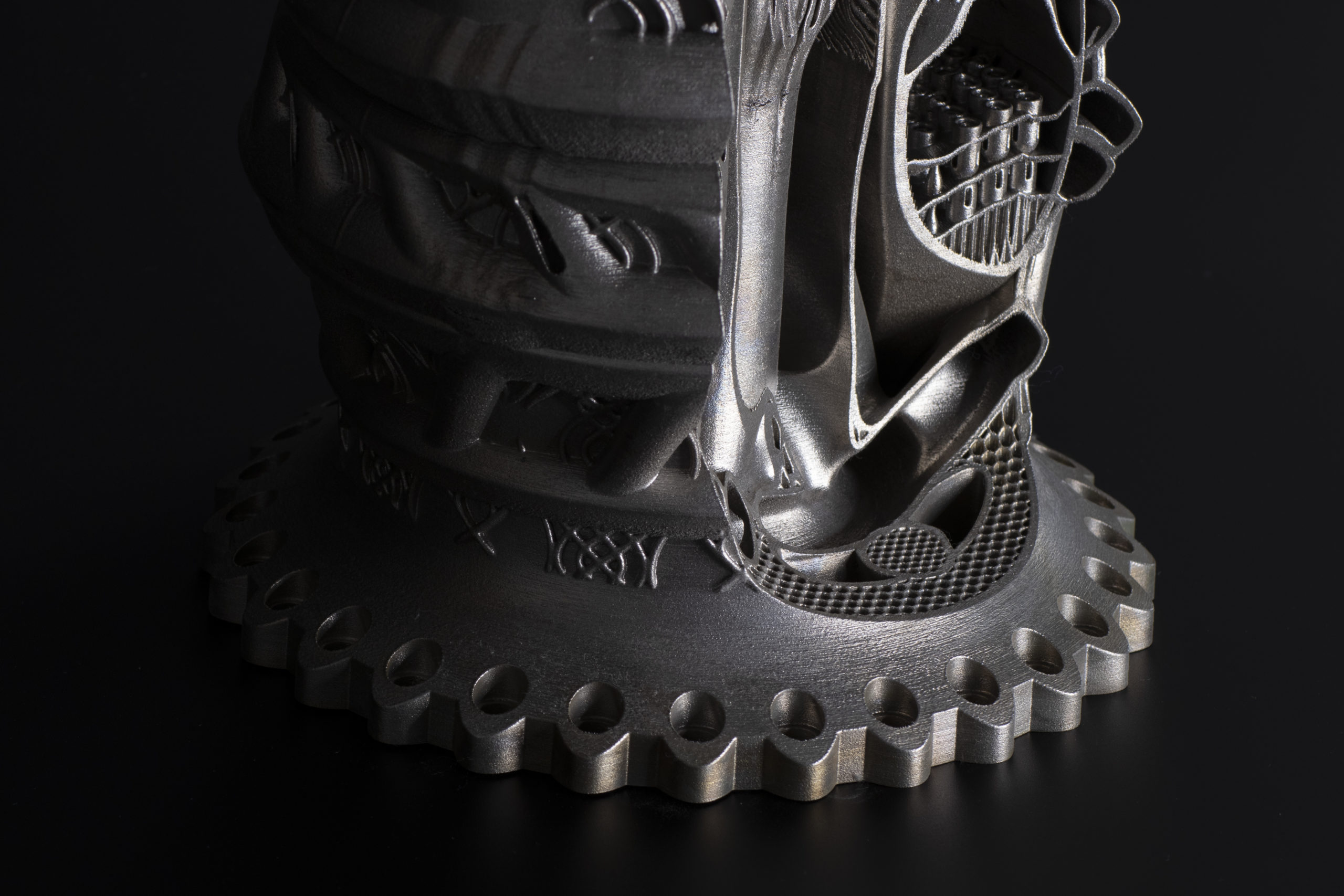 Aerospike nozzle. Image courtesy of EOS/Hyperganic. Aerospike nozzle. Image courtesy of EOS/Hyperganic.For the task, Hyperganic Strategic Engineering Lead Josefine Lissner created a completely algorithmic model for various aerospike designs. Within minutes, the team claims they can create almost any engine design imaginable, including injector heads, advanced heat transfer systems, and complex combustion chamber geometries with different thrust levels and sizes. Selected from the many hundreds of designs, the first aerospike engine design was produced by Hyperganic in mere days. Then it was printed in one job on an EOS M 400-4 with zero supports, thanks to the newly launched EOS NickelAlloy IN718 process. After EOS had its first Inconel aerospike engine, it was automatically reengineered for production on the substantially larger AMCM M 4K system in copper. Dubbed by the companies as "the world’s largest 3D printed aerospike rocket engine," this final copper engine was built from the ground up using Lissner's Hyperganic Core algorithms. The actual parts can be seen live at the upcoming RAPID + TCT event on May 17 through 19 in Detroit and at the Space Tech Expo USA in Long Beach, California, October 6 through 8. The post AMCM ups the Game in 3D Printed Rockets with World's Biggest Aerospike Engine appeared first on 3DPrint.com | The Voice of 3D Printing / Additive Manufacturing. |
| ToughRubber 3D Printing Resins from Desktop Metal Aim to Break the Acrylate Mold Posted: 17 May 2022 06:00 AM PDT Though vat photopolymerization has proven to be capable of high throughput production of high-resolution parts, photopolymer resins often lack the physical properties necessary for end part applications. Desktop Metal (NYSE: DM) seeks to change this through the release of its DuraChain materials, which the company claims overcome these challenges. Photopolymers for 3D printing are typically acrylate based, which results in brittle prints that can shatter on impact. Companies like Carbon attempt to address this issue using a two-part formula, in which additives, triggered by exposure to heat, augment the chemistries to offer better performance. 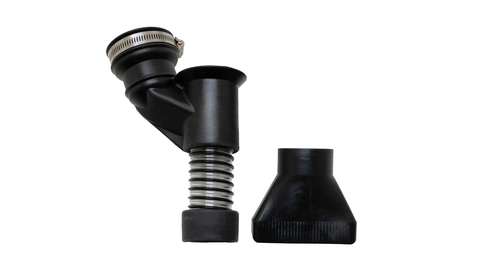 The black shroud of the DustBuddie from Dustless Tools is just one rugged end-use application being 3D printed in DuraChain materials, which use a 2-in-1 pot chemical reaction to produce stronger new material properties in DLP printing. Desktop Metal says more innovations will be announced in the new resin category this year. Image courtesy of Desktop Metal. In contrast, DuraChain relies on Photo Polymerization-induced Phase Separation (Photo PIPS), in which the materials phase separate into two parts at a nanoscopic level. With a long pot life of about a year, the material can be stored for a longer period of time, as well. The materials were developed by Adaptive3D, a Texas-based startup acquired by Desktop Metal in 2021. The startup's predecessor material, ToughRubber, was said to be able to stretch to 4.5 times its original length before recovering from the deformation.
Traditional limitation to acrylates is in part due to the fact that most vat photopolymerization methods cannot process highly viscous materials. In part, this is because most digital light processing (DLP) machines rely on bottom-up projection, casting light through a transparent resin vat. Because more viscous materials are often heavier and require more energy, suspending them upside down on the build tray can be difficult. Manufacturers like Fortify, Formlabs, and, most recently, BCN3D, have developed proprietary methods for processing these thicker materials. For Desktop Metal, the solution is to 3D print these materials using the Xtreme 8K system from ETEC (formerly EnvisionTEC). The Xtreme 8K projects light downward, bypassing the suspension problem. 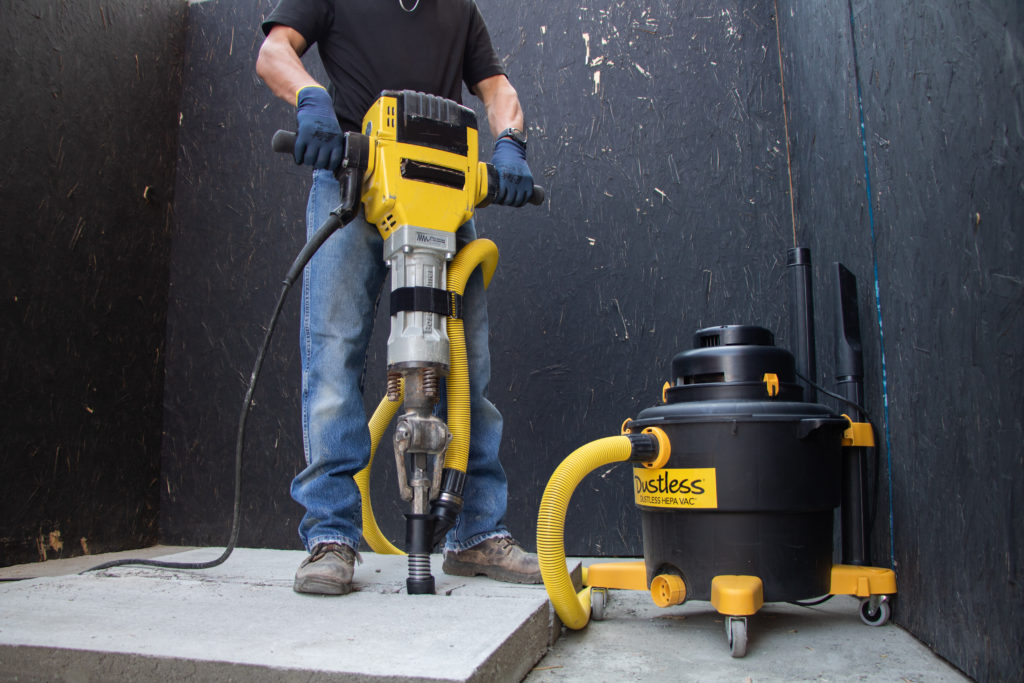 The DustBuddie made from DuraChain materials. Image courtesy of Desktop Metal. Now, Desktop Metal is releasing its first DuraChain materials, Elastic ToughRubber 70 and 90, offering different Shore A durometer values. While the former is only available in black, the latter is available in black and white, which can be dyed for a given application. Demonstrating the utility of the materials, industrial vacuum manufacturer Dustless Tools used the material to 3D print its DustBuddie for demolition hammers. This required a material with high energy return, tear strength, and resilience. Dustless suggests that the product, which collects dust from demo hammers, would have been cost prohibitive for injection molding, given the niche segment. However, with 3D printing, the company was able to bring the product to market. To understand the material in greater context, we reached out to David Walker, co-founder of Azul3D and the chair of the Photopolymer Additive Manufacturing Alliance Executive Advisory Board. About the material, Walker said:
Regardless of Desktop Metal's specific products, the news does reflect a change in the market in which a wider variety of photopolymers are being introduced. Along with the companies already mentioned, Inkbit has expanded beyond acrylates. This will certainly mean greater advances in the field, as well as greater adoption and much broader applications for vat photopolymerization. The post ToughRubber 3D Printing Resins from Desktop Metal Aim to Break the Acrylate Mold appeared first on 3DPrint.com | The Voice of 3D Printing / Additive Manufacturing. |
| 3D Printing Financials: 3D Systems Adjusts 2022 Guidance Range After Mixed Q1 Earnings Results Posted: 17 May 2022 05:30 AM PDT For a while, it seemed companies worldwide were recovering from a two-year hiatus due to the pandemic. But then 2022 turned out to be another year of uncertainties, driven primarily by raging inflation in the U.S. and Europe, coupled with the geopolitical developments, particularly between Ukraine, Russia, and now Finland. As a result, stock markets keep plunging into what many experts consider the brink of a bear market. With prolonged price declines that could last well into the second half of the year, it isn't easy to anticipate what things will look like for the 3D printing industry's public businesses by the year’s end. By now, we have seen many of them report mixed results when it came to first-quarter earnings for 2022, and 3D Systems (NYSE: DDD) is no different. In fact, CEO Jeff Graves suggested in an earnings call with investors on May 10, 2022, that the business has been hard at work during the last two years to become fully organized into two core business units (healthcare and industrial solutions), but "the operating environment has been difficult and largely unpredictable." This is probably reflected in the stock price of the last 12 months, as 3D Systems plunged 55.5% from $22.71 on May 17, 2021, to $10.10 today, after having navigated some pretty high share prices throughout the entire last year, with peaks near $50. This year's first quarter started with revenue of $133 million, a 9% decline compared to the same period last year, solely due to businesses divested during 2021. Still, the firm says that it grew 10% over the same period the previous year when excluding revenue from divestitures. Yet, compared to the fourth quarter of 2021, company revenue decreased 11.9% due to seasonality. The strong divestiture-adjusted revenue growth is primarily attributed to increased product and service demand across both business segments. Adjusted for divestitures, revenue in the first quarter for healthcare increased by 4.6%, and industrial increased by 15.7% compared to the same period last year. According to Chief Financial Officer (CFO) Jagtar Narula, the rebound in industrial began in Q4 of 2020 and continued through 2021 and into the first quarter of 2022, making the fifth consecutive quarter of year-over-year organic growth in the industrial segment. 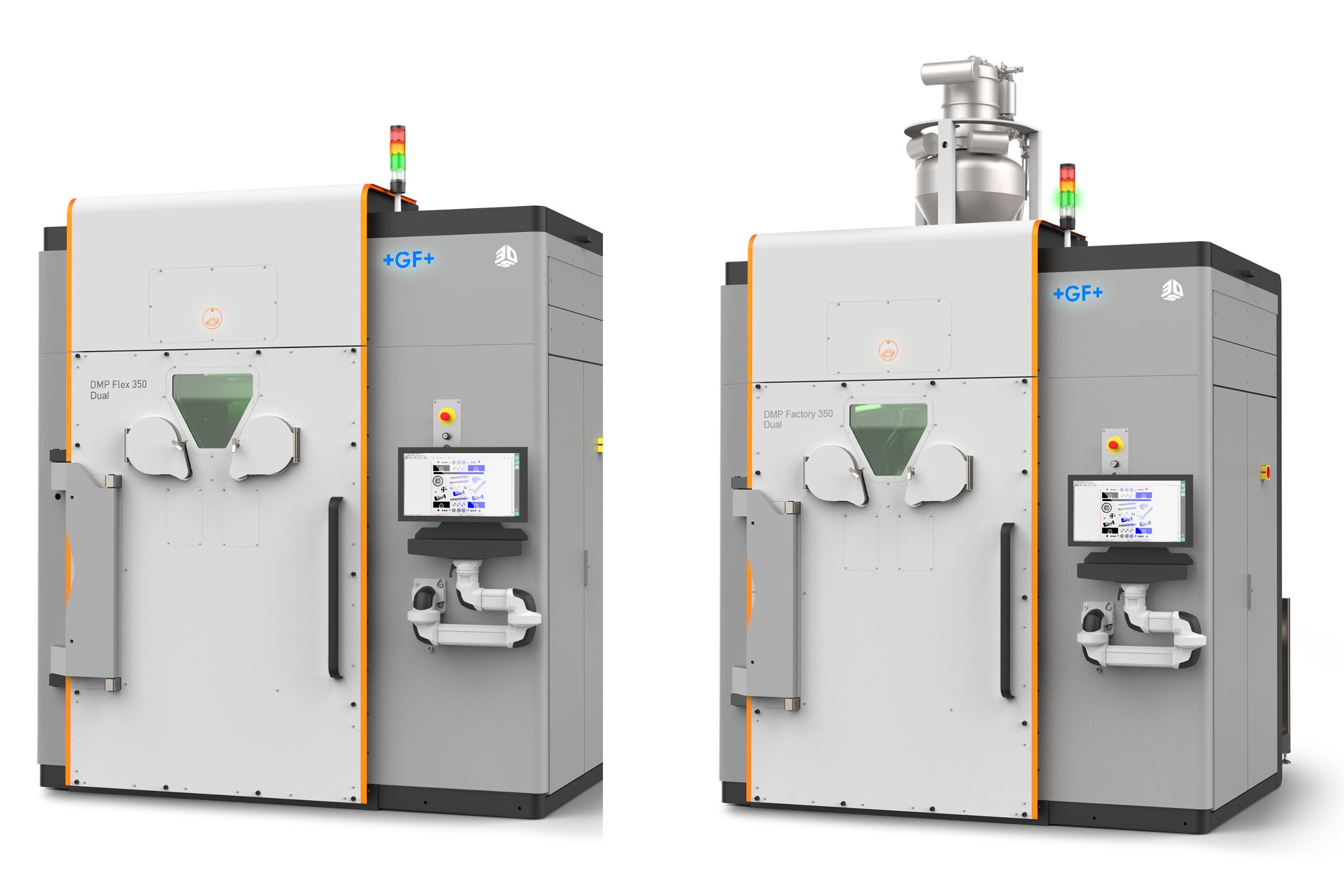 3D Systems DMP Flex 350 Dual (left) and DMP Factory 350 Dual (right). Images courtesy of 3D Systems. 3D Systems DMP Flex 350 Dual (left) and DMP Factory 350 Dual (right). Images courtesy of 3D Systems.As for healthcare, Graves pointed out that management had anticipated stronger results at the beginning of the year, being driven in part by the introduction of 3D Systems' new DMP 350 Dual, a high-productivity version of its well-proven metal printer, the DMP 350, which has been a mainstay for many of the brand's healthcare customers in recent years. These customers are now qualifying the new dual laser system and updating their procurement plans to optimize their production workflow.
Also, on the healthcare side, 3D Systems recently received a 510k clearance from the FDA for its new Virtual Surgical Planning or VSP Bolus solution. Designed for improved radiotherapy treatments for approximately 50% of patients diagnosed with cancer, the VSP Bolus helps target the radiation on the desired location during treatment and is customized to a patient's specific anatomy and treatment plan. Graves said the company has begun marketing the bolus solutions with key customers and expects to see solid demand for this family of products in the future.
In addition to the 510k for the new bolus product, 3D Systems applied for another 510k clearance for 3D printed peak polymers for craniomaxillofacial reconstruction via its recently acquired startup Kumovis one of the only medical 3D printing technology manufacturers with clean-room technology.  Kumovis 3D prints cranial implant with cleanroom technology. Image courtesy of Kumovis/3D Systems Kumovis 3D prints cranial implant with cleanroom technology. Image courtesy of Kumovis/3D SystemsOverall, the firm reported net losses of $26.8 million or 21 cents per share, a steep downturn compared to 2021's first-quarter net income of $45.2 million, or 37 cents per share. In addition, the company ended the quarter with $745.6 million of cash and short-term investments on hand, which declined by approximately $44 million since the end of the fourth quarter of 2021, primarily as a result of operating loss, higher inventory levels, advanced tax payments, investment in Enhatch, and cash payments related to net share settlements on stock-based compensation. Graves said management is "reasonably pleased with the first-quarter results, especially given the macroeconomic conditions and ongoing geopolitical events." Looking ahead, he expects the remaining quarters to be even stronger, following a pattern similar to the seasonality experienced last year. However, 3D Systems is narrowing its full-year 2022 guidance and now expects revenue to be within a range of $580 million and $625 million, a tightening of the range.
The post 3D Printing Financials: 3D Systems Adjusts 2022 Guidance Range After Mixed Q1 Earnings Results appeared first on 3DPrint.com | The Voice of 3D Printing / Additive Manufacturing. |
| 5 Ways Biden’s AM Forward Strategy Will Grow 3D Printing in the US Posted: 16 May 2022 06:30 AM PDT On May 6, 2022, President Joe Biden paid a visit to United Performance Metals in Hamilton, Ohio, where he announced the launch of a new federal 3D printing program dubbed Additive Manufacturing (AM) Forward. While there are a lot of issues fought over in U.S. government, this topic is one that will likely receive bipartisan support. This is due to the fact that it encourages job growth in the nation, as well as promotes U.S. military interests through AM Forward's initial participant companies: GE Aviation, Honeywell, Lockheed Martin, Raytheon and Siemens Energy. In turn, we can expect a number of developments to emerge in the AM sector as a result of this program—just as we saw with the establishment of Manufacturing USA and America Makes under President Obama. Here are just five of the ways AM Forward will impact the national 3D printing market: Feature image courtesy of Gage Skidmore. The post 5 Ways Biden's AM Forward Strategy Will Grow 3D Printing in the US appeared first on 3DPrint.com | The Voice of 3D Printing / Additive Manufacturing. |
| 3DPOD Episode 105: Automated Post-Processing with Joseph Crabtree, CEO AM Technologies Posted: 16 May 2022 06:00 AM PDT Joseph Crabtree’s Additive Manufacturing Technologies is spreading around the world. The company has offices in four countries and its PostPro3D vapor fusion technology is growing. But, Joseph wants more. He wants to move into more post-processing technologies and make a far more integrated solution. Joseph tells us about his plans, his Brexit mitigation strategy, and how he sees the market evolving. Enjoy this episode! The post 3DPOD Episode 105: Automated Post-Processing with Joseph Crabtree, CEO AM Technologies appeared first on 3DPrint.com | The Voice of 3D Printing / Additive Manufacturing. |
| BCN3D & Henkel Developing New Formulations for VLM Resin 3D Printing Posted: 16 May 2022 05:30 AM PDT Recently, 3D printing solutions manufacturer BCN3D Technologies introduced a new resin 3D printing method called Viscous Lithography Manufacturing, or VLM, which the company says is able to process resins that are 50 times more viscous than the industry standard and thus open up new applications, such as footwear. Now, the Barcelona-based company has announced a collaboration with Henkel Adhesive Technologies, in which the two will develop more formulations for the patented VLM process to help achieve these new applications. As part of the alliance between the two, which has been ongoing since 2020, Henkel's 3D printing resins will be implemented in BCN3D's new Applications Center, which is also where the VLM Technology Adoption Program is happening. Program participants, including Saint Gobain and Prodrive, will be among the first to use VLM and enjoy the benefits of BCN3D’s resin 3D printing as applied to their exact AM needs.
VLM is a lithography-based process that is said to print high-performance parts faster and more cost-effectively. The technology laminates thin layers of highly viscous resins onto both sides of a transparent transfer film, and by getting rid of what BCN3D referred to as “a strict low viscosity constraint,” the process makes it possible to add new modifiers and ingredients to the resin in order to achieve the necessary mechanical and thermal properties. Through the Technology Adoption Program, VLM’s “unique” properties can help partners come up with new solutions for viscous, high-performance AM resins. As a long-time leader in adhesives, sealants, and functional coatings, Henkel has plenty of experience in multiple applications and industries, including additive manufacturing with its Loctite material brand. That’s why it’s likely to be a great partner for BCN3D and the manufacturing solutions enabled by its VLM process.
To speed up its goal of offering manufacturing autonomy and production control to manufacturers through its VLM technology, BCN3D will work with Henkel to develop new materials for the process, though neither company can disclose exactly what materials are being created. But, we do know that one main research area is focused on elastomeric applications, for which high-viscosity resins would be extremely useful. Because viscous resins often include many oligomers, a loosely crosslinked polymer network is enabled that can offer better mechanical properties, withstand mechanical stresses while remaining flexible, and perform like industrial-grade molded elastomers. To learn more about this VLM-based collaboration between BCN3D and Henkel, visit Booth 1535 at RAPID + TCT next week at Huntington Place in Detroit, Michigan. Both companies will be there and happy to discuss the benefits of their partnership, and show off 3D printed resin parts made with VLM technology. The post BCN3D & Henkel Developing New Formulations for VLM Resin 3D Printing appeared first on 3DPrint.com | The Voice of 3D Printing / Additive Manufacturing. |
| 3D Printing Financials: Xometry’s Revenue Doubled, Losses Deepened Posted: 16 May 2022 05:00 AM PDT Revenue almost doubled to $83.7 million for digital manufacturing marketplace Xometry (NASDAQ: XMTR), but so did its net losses for the first quarter of 2022. The Gaithersburg, Maryland-headquartered company reported a loss of $20.0 million for the quarter (or 43 cents per share), an increase of $9.5 million year-over-year. This was mainly due to total expenses expanding 145% to $45.7 million, driven primarily by the addition of supplier service provider Thomas (acquired by Xometry in 2021) for an entire quarter. However, losses adjusted for stock option expense and non-recurring costs came to $12.6 million or 27 cents per share. With quarterly revenue up 90% year-over-year, Chief Financial Officer (CFO) Jim Rallo told investors during an earnings call on May 12, 2022, that Xometry had a solid first quarter and expected significant revenue and gross profit growth in the next period and the balance of 2022. A big part of this increase comes from the rapid adoption of the Xometry marketplace service by larger accounts across North America and Europe. However, the underlying strength of the business comes from repeat purchases from existing accounts, which provides management with substantial revenue visibility and predictability, highlighted Rallo.
In light of the ongoing macro events, from a global supply chain crisis to an escalating conflict in Ukraine, Xometry says its growth hasn't stopped. In fact, it demonstrated the need for a continued rapid digital transformation of the manufacturing industry.
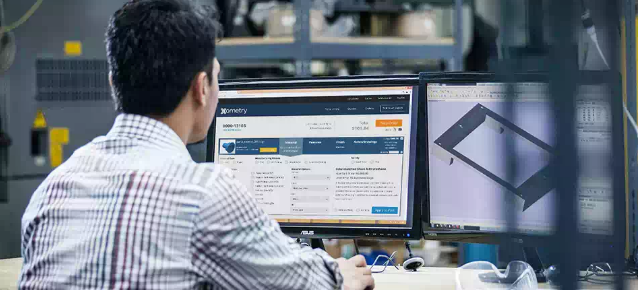 Xometry’s marketplace helps pair sellers and buyers that need 3D printing solutions. Image courtesy of Xometry. As its marketplace continues to scale and as the number of transactions grows, Xometry's machine learning becomes smarter, driving better matches for buyers and suppliers and helping improve gross margins. Earlier in March, the company introduced the Xometry Everywhere software, which extends the reach of its AI-driven instant-quoting pricing engine to popular third-party sites where engineers and other buyers spend significant amounts of time. Xometry Everywhere is also available for integration into the procurement processes of Fortune 1000 companies. Later in the second quarter, the company will rely on its Xometry Everywhere software to integrate the AI-driven pricing engine into the Thomas network platform, extending the Xometry marketplace to Thomas’ 1.4 million registered users. Additionally, at this time, the brand says it will expand its marketplace menu, extending quoting capabilities into new categories based on the data and suppliers from the Thomas network. This means buyers will not only be able to choose from expanded categories and processes, but we’ll also more easily find local suppliers with expanded sets of certifications. Currently, Xometry continues to ramp up its network of active suppliers, which further enables the marketplace to successfully match supply and demand and improve gross margins. On top of strong financial results in Q1, it released new products and services to improve the marketplace experience for users and made further progress in its integration plans with Thomas, which is included in Xometry's supplier services. Altschuler pointed to some very good early signs from the Thomas buyers (who are adopting the Xometry instant quoting service) and suppliers who are taking work from Xometry. There has also been an increase in Thomas Net subscriptions and many user adoptions of the analytics and other enhancements made to Thomas Net. Overall, it appears that the integration is moving smoothly, and Xometry expects this to continue as they move forward. Overall, management hopes to see strong growth in 2022 and improve operating leverage. Management also provided guidance for the next three months and the full year along with the earnings announcement. Hoping to see revenue during the second quarter of 2022 in the range of $91.5 million and $93.5 million, representing year-over-year growth of between 81% and 85%. As for the full year of 2022, Xometry anticipates revenue growth of up to 83%, or $400 million (that's nearly triple what the company made in 2020), driven primarily by increasing active buyers and suppliers and added suppliers services, and revenue synergies with Thomas. In addition, this year will see Xometry expand its marketplace domestically and abroad and deliver additional services to buyers and suppliers, suggested Altschuler. Hoping to tap a total addressable market of over $2 trillion in the massive $35 trillion global manufacturing industry means the company is ready to invest even further to capitalize on its position as one of the leading two-sided marketplaces. At the same time, the CEO stated that he expects gross profit dollars to grow over fourfold with significant gross margin expansion and that this will be "just the beginning" for the business.
The post 3D Printing Financials: Xometry's Revenue Doubled, Losses Deepened appeared first on 3DPrint.com | The Voice of 3D Printing / Additive Manufacturing. |
| 3D Printing Webinar and Event Roundup: May 15, 2022 Posted: 15 May 2022 05:30 AM PDT This is a big week in the additive manufacturing industry—RAPID + TCT is here! But that’s not the only event in town; there will also be webinars on topics like SOLIDWORKS tips, machine learning and AI for digital twins, getting 3D printing started in a hospital setting, and much more. Read on for all the details! The Experience Stratasys Tour ContinuesFirst, Stratasys continues its Experience Tour on the west coast this week, first at Linn-Benton Community College in Albany, Oregon, hosted by NWTP on Monday, May 16th. GoEngineer will host at the River Pig Saloon in Portland on the 17th, and CATI will host at Topgolf in Hillsboro on the 18th. Finally, on Friday, May 20th, the tour heads to Washington, with GoEngineer hosting at Postdoc Brewing in Redmond.
You can register for the Stratasys Experience Tour here. Stay tuned for more dates and locations in the future! Wohlers Report LiveThe day before RAPID begins, ASTM International and SME will present the first ever Wohlers Report Live on Monday, May 16th, from 1:30-6 pm EST at Huntington Place in Detroit, Michigan. The event will discuss some of the more interesting AM trends and findings, such as industry growth, popular materials, M&A and investment, myths, and more, from the Wohlers Report 2022 team: Terry Wohlers, MSc, Dr. h.c., FSME, Head of Advisory Services & Market Intelligence; Noah Mostow, BSME, MSc, Market Intelligence & Analytics Manager; Joseph Kowen, LLB, MBA, Associate Consultant; and Shane Collins, FASTM, AMUG Dino, Associate Consultant. Attendees will gain perspective and have the chance to engage in interactive sessions with industry leaders.
You can register for the first ever Wohlers Report Live here. This includes a digital copy of the Wohlers Report 2022, a Q&A session, and a networking reception. RAPID + TCT 2022This one hardly needs an introduction—RAPID + TCT, North America's largest and most influential additive manufacturing event, will be in Detroit, and also available in a digital format, May 17-19. There will be more than 130 presentations in 7 themed tracks focused on R&D, Aerospace, Wider Industrial, Healthcare, Ecosystem, Automotive, and Solutions, in addition to over 400 technology innovators, more than 200 influential speakers, thought leadership panels and over 20 Technical Industry Panels, interesting keynotes, the SME Zone Theater, a packed exhibit hall with plenty of new product launches, Tech Hub, multiple opportunities for networking—including the AM Industry Celebration—and so much more.
You can register for RAPID + TCT here. Keep an eye out while you’re there for members of the 3DPrint.com team! ASME Policy Impact 2022Also from May 17-19, ASME is holding a virtual event on Policy Impact 2022. This will be the organization’s second annual premier legislative event, and will feature 20 expert speakers from several sectors, such as clean energy, the supply chain, and workforce development. The keynote address will focus on the Biden-Harris Administration’s priorities for engineering R&D, workforce development, and I’m hoping additive manufacturing. Virtual Congressional visits will be available via Zoom all day on the 19th, and the event will wrap up with a virtual networking reception.
You can register for the virtual event here. Rapid.Tech 3D in GermanyLive-streaming and in-person at Messe Erfurt in Germany, also from May 17-19, the Rapid.Tech 3D specialist conference will take place, offering attendees insight into current AM developments. There will be a variety of trade forums, including Design, 3D Printing & Education, AM in Construction Engineering & Architecture, AM Science, Aviation, News from AM, Medical, Automotive & Mobility, and more, with keynote speeches from Autodesk, Airbus Helicopter, Porsche, the German Emirati Institute, Procter & Gamble, Autodesk, Toolcraft, Sauber, and more. The finalists in this year’s 3D Pioneers Challenge will also be presented, and the winners announced, at Rapid.Tech 3D, and a lot of big names will be exhibiting, such as Trumpf, Nano Dimension, Stratasys, Intamsys, and more.
You can purchase a Rapid.Tech 3D ticket here. Global Industrie 2022Coming to the Paris Nord Villepinte exhibition complex from May 17-20, Global Industrie is “the biggest factory in France,” with 1,500 machines in operation, 2,300 exhibitors from across the whole industrial ecosystem, and a grand total of 15 zones, including Electronics, Robotics, Additive Manufacturing & 3D Printing, Green Tech, Smart: Digitalization, Automation and Mechatronics, and more. Attendees will have the chance to see state-of-the-art industrial processes and innovations, and plenty of big names from the AM industry will exhibit at Global Industrie, including Markforged, Formlabs, Altair, and Multistation, which will share a booth with 3d signals; the two just announced an extension of their partnership.
You can subscribe and register for the event here. TriMech Presents 60 SOLIDWORKS Tips in 60 MinutesIf you’ve only got an hour to spare on Tuesday, May 17th, spend it with TriMech as it presents “60 SOLIDWORKS Tips in 60 Minutes.” During the webinar at 10 am EST, TriMech Solutions Consultant – Applications Sawyer Gara will demonstrate 60 SOLIDWORKS tips that will help you become more efficient when using the software and its daily design tools. Gara will discuss keyboard shortcuts for faster modeling, workflows and functionality in SOLIDWORKS, and other helpful tips.
You can register for the webinar here. Sinterit: SLS Printout WebinarAt 10 am EST on Wednesday, May 19th, Sinterit will host a brief “SLS printout – Q&A session” webinar covering the basics of SLS 3D printing “From STL to printout.” Sinterit experts Michał Niemas, Application Engineer, and CMO Jarek Pieniążek, will answer questions on everything from how to prepare a model for SLS printing, the level of precision and accuracy you can expect, how to post-process a print for the highest quality, and more.
You can register for the webinar here. ASME & SmartUQ on Digital TwinsFor its second webinar this week, ASME will hold a Mechanical Engineering webinar on “The Role of Machine Learning and AI for Digital Twins” at 2 pm EST on the 18th. Presented by Gavin Jones, Pr. Application Engineer at SmartUQ, the webinar is meant for engineers, managers, and data scientists who are involved in, use, or operate product and equipment design and manufacturing, and are interested in using machine learning as part of a digital twin workflow. Attendees will hear about an electric motor use case in which sensors and machine learning techniques like statistical calibration were used to improve the accuracy of a digital twin.
You can register for the webinar here. Smart Manufacturing Experience May WebinarNext month, the Smart Manufacturing Experience event is coming to Pittsburgh, but until then, we’ll have to be satisfied with the complimentary, monthly webinars, which offer a glimpse at technologies that will be featured at the event. This month’s webinar, held on Wednesday the 18th at 3 pm EST, will focus on “What it Takes to Deploy Machine Learning in Manufacturing.” Paul Boris, the CRO of Praemo, Inc., will moderate the panel, consisting of featured speakers Andy Henderson, PhD, Praemo CTO, and Matthew Krugh, PhD, Postdoctoral Research Fellow and Lab Manager at Clemson University.
You can register for the webinar here. De-Risking the Production Line with MaterialiseIn its first of two webinars on Thursday, May 19th, Materialise is focusing on “Unsung Heroes of 3D Printing: Cut Costs and De-Risk Your Production Line.” At 10 am EST, attendees will learn how process innovation, lateral thinking, and using 3D printing for simple parts with sensitive time leads, can help renew production. Erik de Zeeuw, Market Manager at Materialise Manufacturing, and Mathieu Cornelis, Innovation Manager at Materialise Mindware, will discuss why 3D printing is a great way to cut manufacturing costs, how to effectively apply AM innovation to small-scale or limited part series in several industries, and more.
You can register for the webinar here. Materialise: 3D Printing & Planning In HospitalsAlso at 10 am EST on the 19th, Materialise will hold a webinar on “Getting Started with 3D Printing and Planning in Your Hospital.” Attendees will hear about 3D printing best practices for personalized patient care, how to scale up clinical operations using the Materialise Mimics inPrint software solution, and more from five expert speakers: Dr. Paolo Traverso, a urologist at IRCCS Ospedale Policlinico San Martino and researcher with the Department of Integrated Surgical and Diagnostic Sciences; Dr. Amir Bigdeli, Head of Interventional & Diagnostic Radiology at Artemed Klinikum München Süd; Shiden Yohannes, Medical Solution Engineer at Formlabs; and Application Engineer Marina Nagel and Medical Application Engineer Antonia Wiedemann, both from Materialise.
You can register for the webinar here. TriMech on New 3DEXPERIENCE 2022x FD02 EnhancementsIn its second webinar of the week, TriMech will present “What’s New in 2022x FD02 for 3DEXPERIENCE SOLIDWORKS,” also at 10 am EST on May 19th. Matt Kokoski, TriMech Technical Manager – 3DEXPERIENCE, will present some of the main enhancements to 3DEXPERIENCE SOLIDWORKS and SOLIDWORKS Cloud, and discuss how these new tools can benefit the design process. Attendees will learn how to navigate these new interface additions, use Bookmarks to organize data, collaborate with users outside of the 3DEXPERIENCE platform, and more.
You can register for the webinar here. 3DEXPERIENCE & Prototype to ProductionSpeaking of SOLIDWORKS, Dassault Systèmes is holding a SOLIDWORKS Live webinar at 11 am EST on the 19th, about “Prototype to Production: A 3DEXPERIENCE Works Story with LID Boss.” Eight speakers, including internal platform experts and guests from the Center for Advanced Design (CAD), will take attendees on a deep dive into the practical ways that 3DEXPERIENCE Works can be used to refine, validate, and manufacture products. You’ll learn to use the power of the 3DEXPERIENCE platform to change how you design.
You can register for the webinar here. SprintRay at LMT Lab Day WestFinally, LMT Lab Day West will be held May 20-21 at the Hyatt Regency Orange County in California. Describing itself as the “The Second Largest Dental Laboratory Event in America,” seminars will cover topics including 3D printed crowns, understanding the digital dentistry workflow, the use of zirconia, 3D printed dentures and nightguards, how to manage digital cases in DentalCAD, the FDA's position on automated CAD/CAM manufacturing in the dental lab, and much more. Several big industry names will be exhibiting and speaking at LMT Lab Day West, including SprintRay, Carbon, 3D Systems and Oqton, Stratasys, and more.
You must pre-register for LMT Lab Day West here by the end of today, May 15th if you want to attend. Do you have news to share about any future webinars or virtual and live events? Please let us know! The post 3D Printing Webinar and Event Roundup: May 15, 2022 appeared first on 3DPrint.com | The Voice of 3D Printing / Additive Manufacturing. |
| You are subscribed to email updates from 3DPrint.com | The Voice of 3D Printing / Additive Manufacturing. To stop receiving these emails, you may unsubscribe now. | Email delivery powered by Google |
| Google, 1600 Amphitheatre Parkway, Mountain View, CA 94043, United States | |
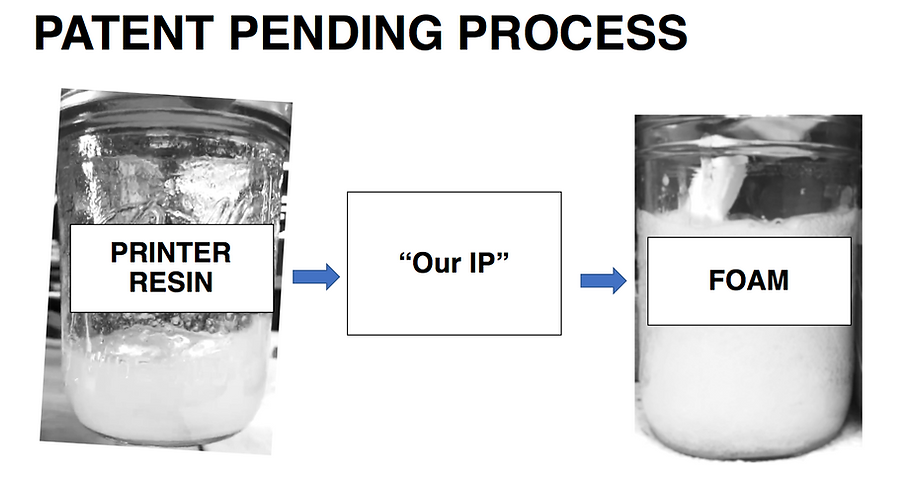
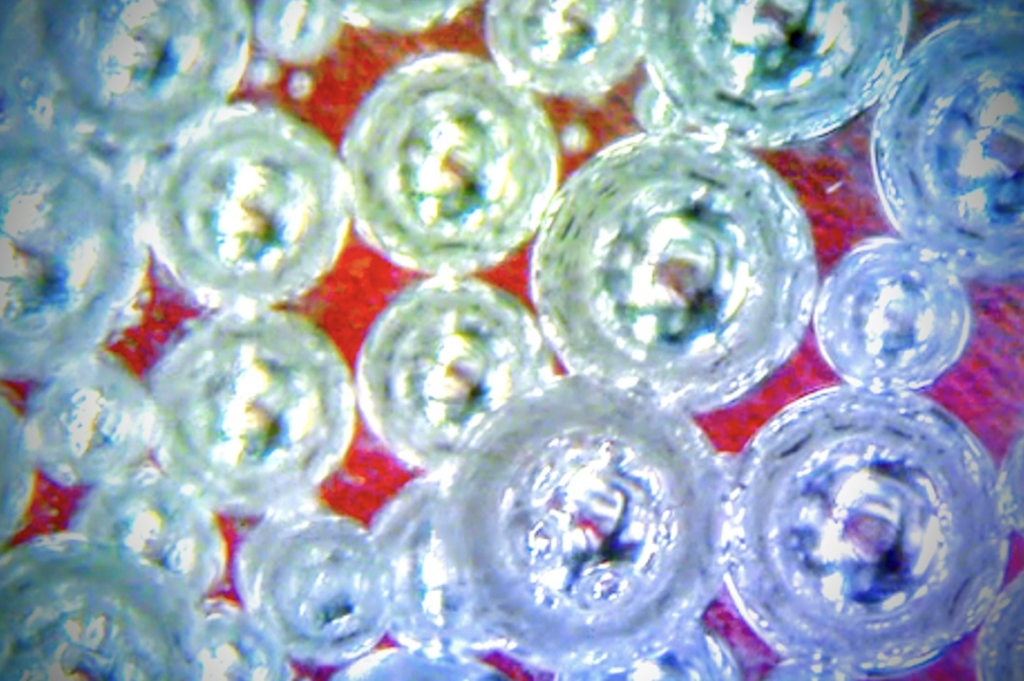
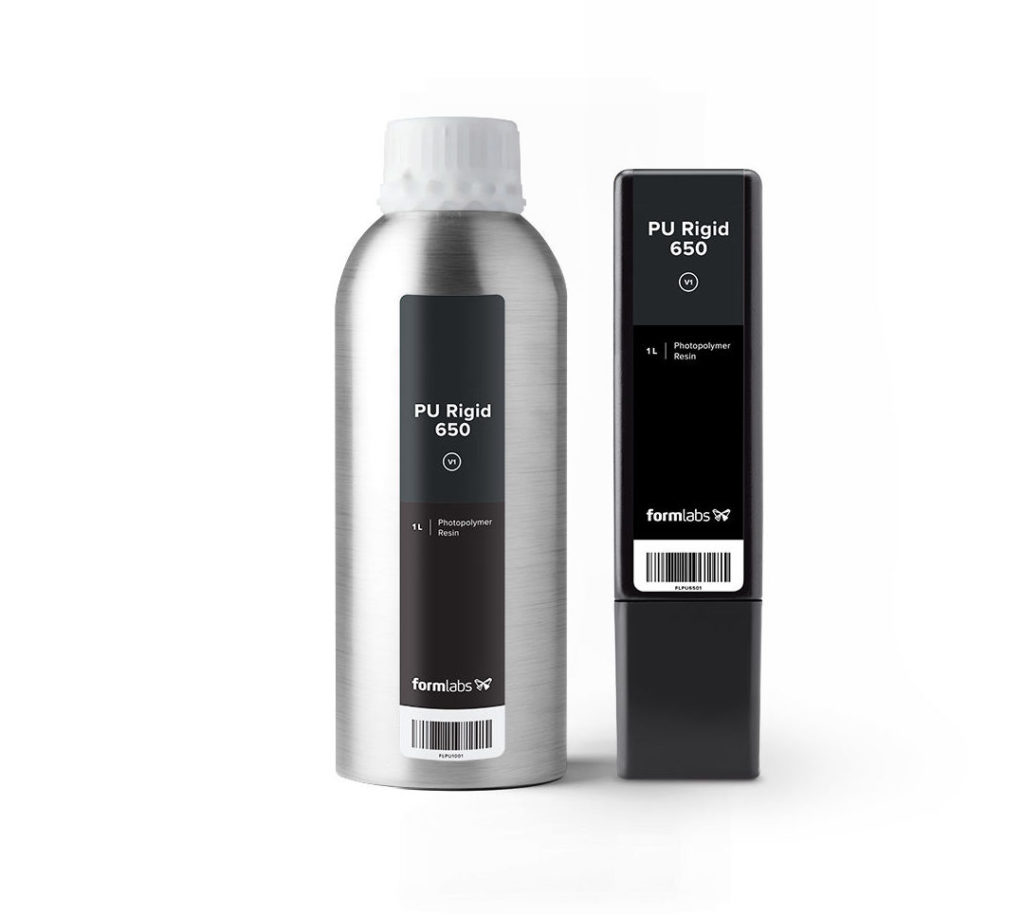
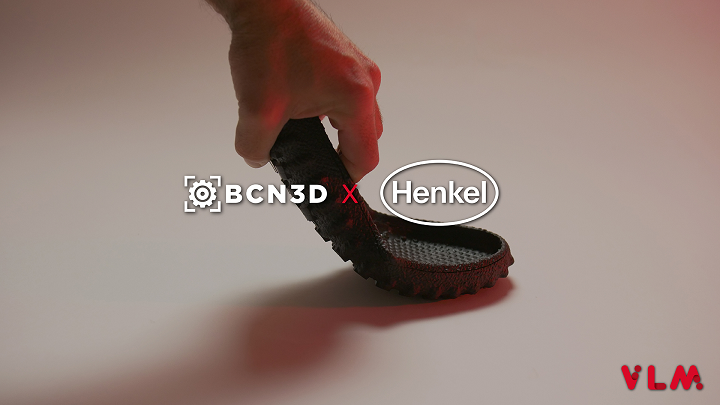

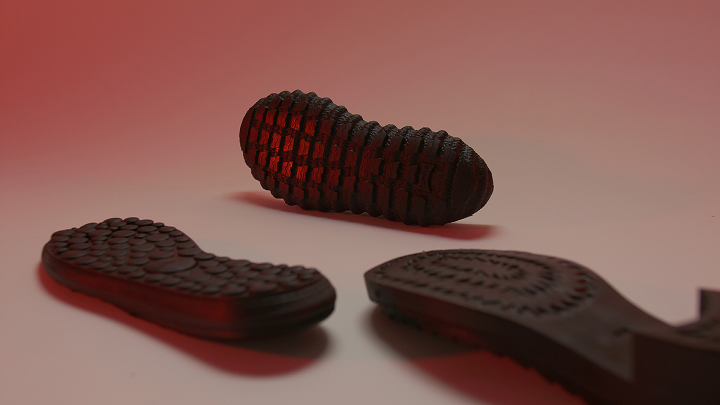
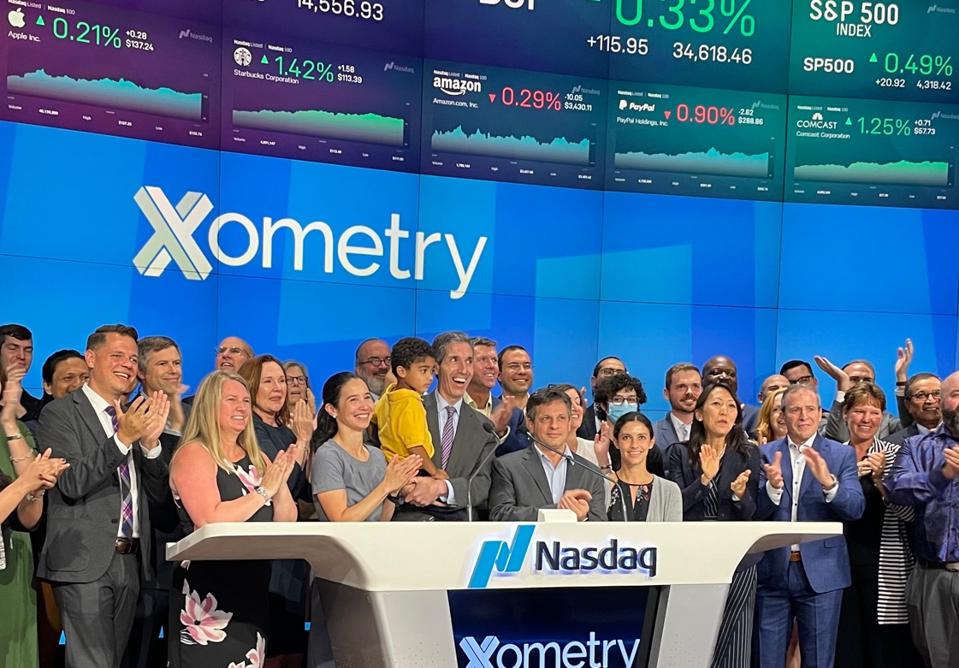

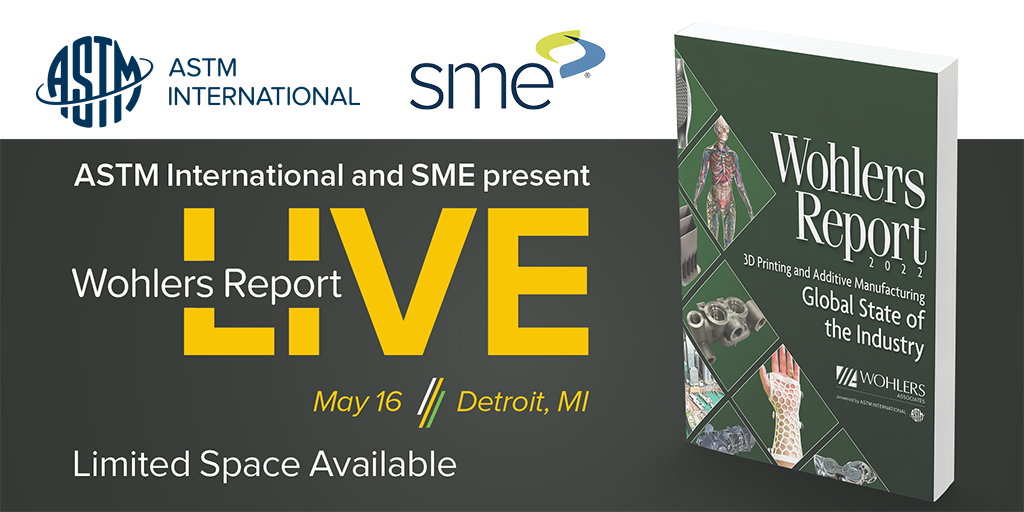



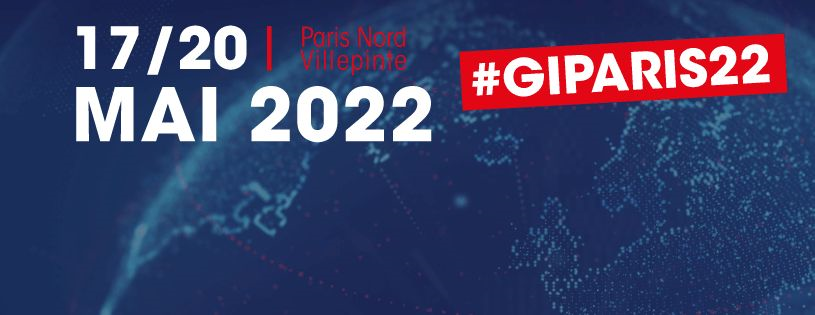

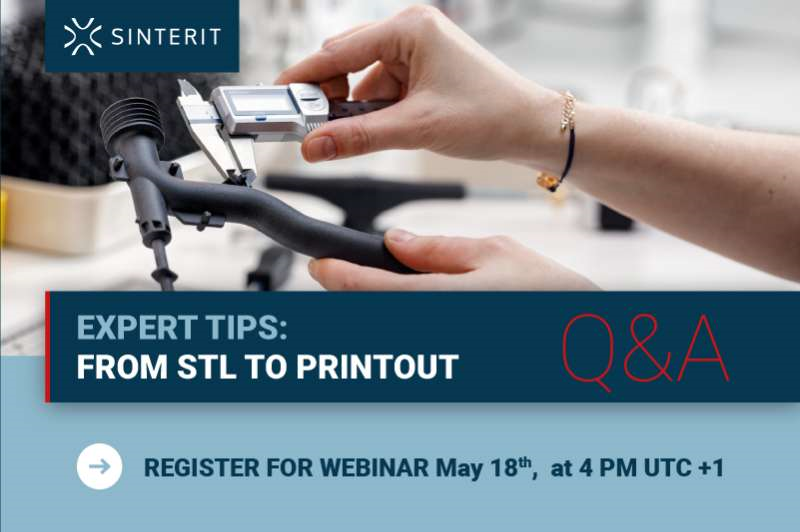


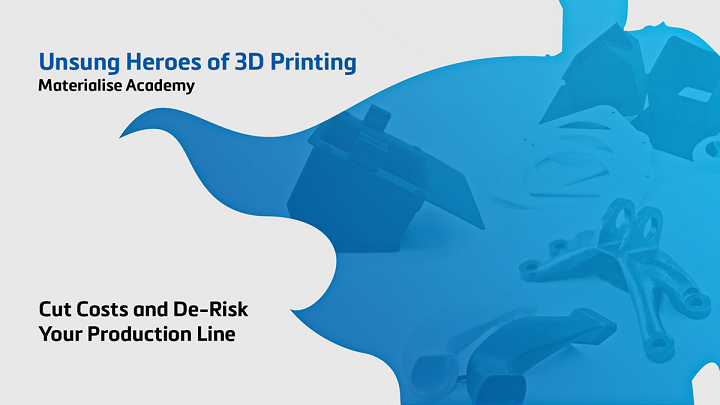


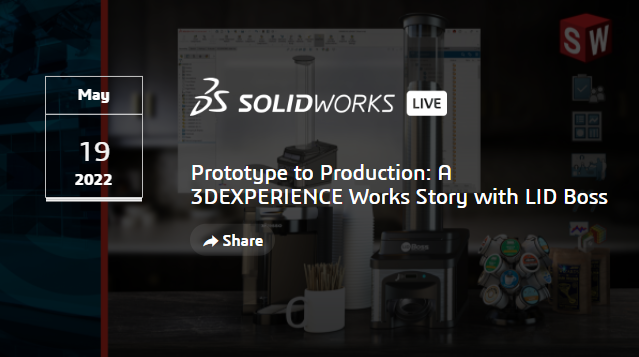


0 comments:
Post a Comment